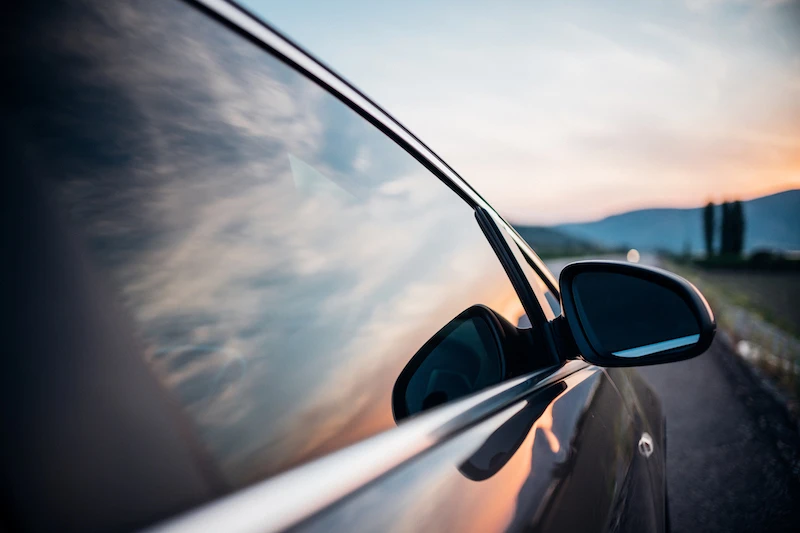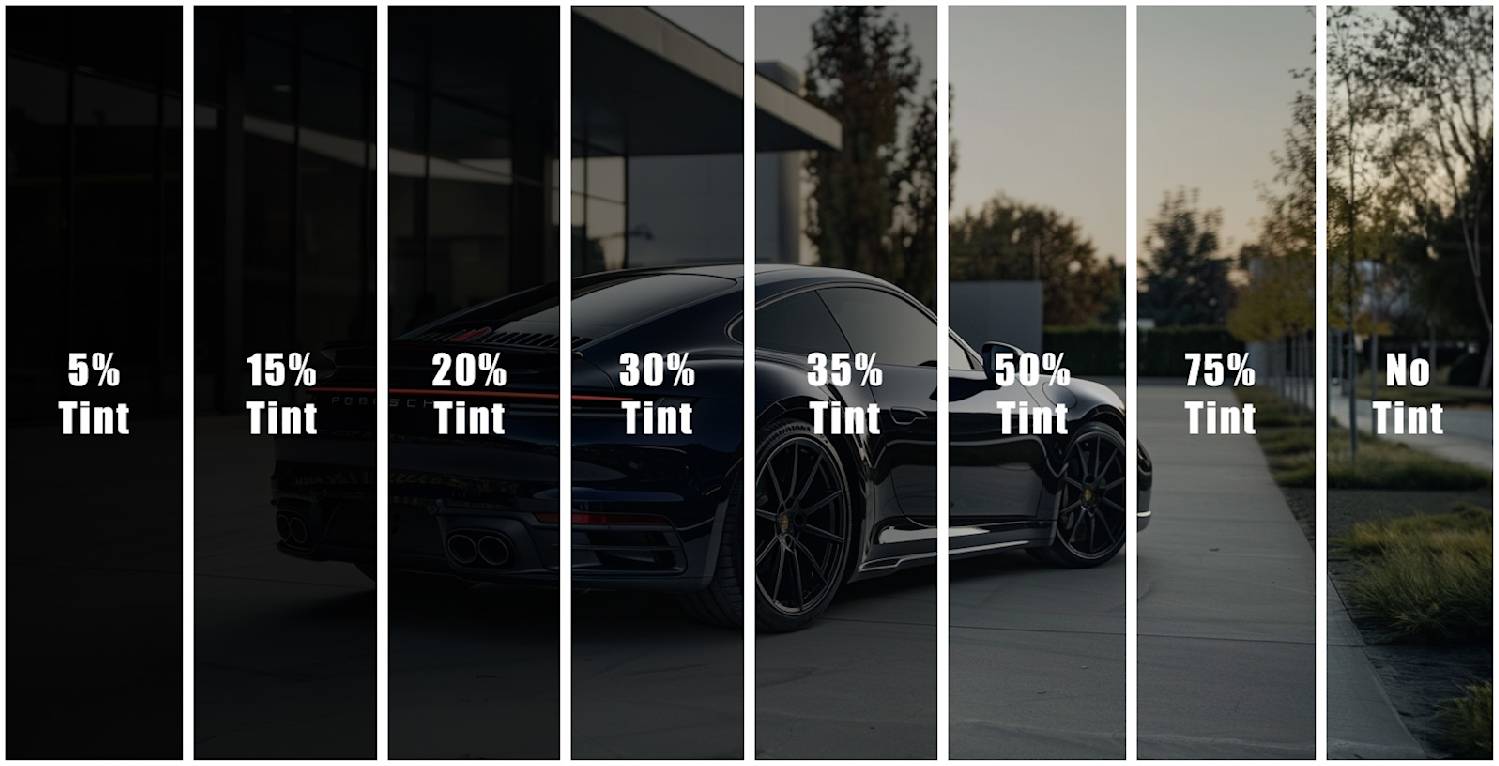Window Tinting Laws: What You Required to Know Before Tinting Your Auto
Recognizing window tinting laws is vital for any type of car owner taking into consideration tinting their auto. Rules vary dramatically from state to state, developing certain limits for Visible Light Transmission (VLT) portions, particularly for front-side windows and windscreens. Failing to conform with these laws can result in fines, the necessity to remove the color, and difficulties with insurance coverage. As you contemplate boosting your automobile's look and capability, it is crucial to understand not only the legal effects yet likewise the functional factors to consider that include choosing the appropriate tint. What aspects should you prioritize in your decision-making procedure?
Value of Recognizing Tint Laws
Comprehending home window tinting laws is important for car proprietors to ensure compliance with state laws. These legislations determine the permissible levels of tint darkness and reflectivity, which can significantly vary from one territory to another. Stopping working to abide by these laws can cause penalties, mandatory removal of the color, and potential difficulties throughout vehicle evaluations.
Additionally, recognizing these laws helps automobile proprietors make educated decisions concerning their tinting choices. Various kinds of home window films provide numerous advantages, such as UV defense, warmth denial, and glow reduction. Without knowledge of the lawful limits, vehicle owners risk choosing products that might eventually lead to legal problems.
Furthermore, awareness of tinting legislations promotes a much safer driving environment. window tinting. Exceedingly dark colors can harm presence, increasing the threat of mishaps, specifically in the evening or in damaging weather. Police likewise use these laws to make certain road safety and security, making conformity not just a legal obligation however an individual responsibility
State-Specific Color Regulations
Each state in the united state has actually developed its own details policies pertaining to home window tinting, mirroring a diverse range of standards and requirements. These regulations can differ substantially, influencing how car owners come close to setup and conformity. For circumstances, some states enable darker tints on rear windows while imposing rigorous restrictions on front-side home windows.
Furthermore, guidelines usually define allowed color materials and colors. Particular states forbid reflective tints altogether, while others may allow them to a minimal degree. Some jurisdictions mandate that automobiles with colored windows display a sticker suggesting compliance with state laws, providing a clear identification for law enforcement.
Enforcement of these regulations likewise differs; some states are much more positive, carrying out arbitrary checks, while others rely upon complaints or noticeable violations to initiate enforcement. Automobile proprietors ought to realize that failure to abide by state-specific tint policies can cause fines, compulsory removal of unlawful tints, or both.

Legal Color Percentages
Figuring out the legal tint percents is critical for vehicle owners seeking to adhere to state guidelines. Each state has certain regulations governing just how much light must travel through the home windows of a car, which is shared as a percentage known as Visible Light Transmission (VLT) This percent varies significantly throughout states and can depend on the kind of window-- front side, back side, and windscreen.
As an example, some states allow as low as 20% VLT on front side windows, while others may permit as try this website much as 50%. Windscreen tinting is often much more restricted, with several jurisdictions allowing just a narrow band of color on top of the windshield. In contrast, back home windows usually have a lot more lenient policies, with some states allowing darker colors.
It is essential for lorry proprietors to acquaint themselves with their local laws to prevent possible legal issues. This includes understanding how VLT is gauged, as it investigate this site can differ based on the kind of home window film used. Staying notified about these laws ensures conformity and advertises safe driving problems for both the automobile proprietor and others when driving.
Consequences of Non-Compliance
Failing to adhere to home window tinting laws can lead to substantial repercussions for car owners. Police officers trained to determine prohibited color levels might release fines, which can differ by territory but usually range from modest to substantial quantities.

Insurance coverage companies may additionally penalize for non-compliance, as illegal alterations can be viewed as a breach of policy terms. If a case takes place., this can impact protection rates or lead to complications in claims.
Ultimately, the consequences of non-compliance extend past immediate economic fines; they can influence a driver's insurance prices, lawful standing, and overall vehicle worth, stressing the significance of adhering to regional home window tinting laws.
Tips for Choosing Tinting Options
Recognizing the ramifications of non-compliance highlights the significance of making educated selections when selecting home window tinting choices. Acquaint on your own with your state's details legislations regarding color darkness and reflectivity. Each state has unique regulations that dictate the permissible restrictions, so ensure you stay within these standards to stay clear of charges.
Secondly, take into consideration the sort of color material. Alternatives consist of colored, metalized, and ceramic tints, each offering varying levels of heat rejection, UV defense, and resilience. For example, ceramic tints offer exceptional heat resistance without disrupting digital gadgets, making them a popular selection.
Furthermore, examine your primary objective for tinting. If you look for boosted personal privacy, decide for darker tints; nonetheless, bear in mind that this may affect visibility in the evening. Conversely, if glow decrease and UV defense are your primary problems, lighter colors might be sufficient.
Lastly, seek advice from an expert installer who is experienced concerning neighborhood laws and can suggest premium materials suited to your navigate to these guys requirements (window tinting). Taking these elements into account will guarantee you make a well-informed decision, eventually boosting both your car's aesthetics and capability
Conclusion
To conclude, knowledge with window tinting laws is necessary before applying tint to a lorry. Each state enforces specific laws concerning visible light transmission percentages, especially for front-side windows and windscreens. Non-compliance can cause considerable penalties, consisting of penalties and mandatory removal of non-conforming color. By recognizing legal requirements and picking proper color products, vehicle proprietors can accomplish visual enhancement while continuing to be compliant with relevant laws. Adherence to these standards makes sure both safety and security and fulfillment.
Recognizing home window tinting legislations is crucial for any vehicle proprietor thinking about tinting their automobile.Recognizing home window tinting laws is crucial for automobile proprietors to ensure conformity with state policies. Some states enable darker tints on back windows while enforcing rigorous limits on front-side home windows.
In comparison, back home windows normally have a lot more tolerant laws, with some states permitting darker tints. (window tinting)
In conclusion, experience with window tinting regulations is necessary prior to using color to a car.
Comments on “Professional Window Tinting Services for Better Comfort and Style in Your Vehicle”